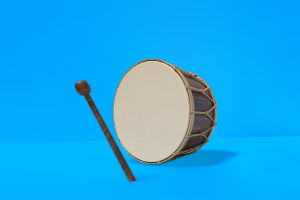When it comes to being the backbone of a band, nothing beats a well-played drum set.
Whether you're starting a new band or looking to understand more about this incredible instrument, this guide will walk you through the essentials of a standard drum set.
The Anatomy of a Drum Set
A standard drum set consists of several key components, each serving a unique purpose. The bass drum, operated by a foot pedal, provides the deep, thumping foundation of your rhythm. The snare drum, arguably the most important drum in the set, delivers that crisp, sharp crack that cuts through the mix and often plays on beats 2 and 4 in basic rock patterns.
The tom-toms come in different sizes: high, mid, and floor toms. These drums offer melodic possibilities and are essential for fills and transitions. The hi-hat cymbals, controlled by both a foot pedal and sticks, create everything from tight, rhythmic "chicks" to washy open sounds. Crash cymbals provide accents and punctuation, while the ride cymbal maintains steady rhythmic patterns, especially in jazz and rock music.
How To Play Drums - Your Very First Drum Lesson
Video by Drumeo
Basic Techniques Every Drummer Should Know
Proper technique starts with how you hold your sticks. The traditional grip, originating from army drumming, involves holding the left stick between your thumb and first finger, while the matched grip has both hands holding the sticks the same way. Most modern drummers prefer matched grip for its versatility and power.
The basic beat, or "groove," typically involves coordinating the bass drum, snare, and hi-hat. Start by practicing the standard rock beat: hi-hat on every eighth note, snare on beats 2 and 4, and bass drum on beats 1 and 3. Master this pattern slowly before increasing speed or adding complexity.
Recommended Drum Sets for Different Budgets
For beginners, the Yamaha Stage Custom Birch is an excellent choice. Priced around $649.99, this kit offers professional-grade birch shells, reliable hardware, and excellent sound quality. It includes a 22" bass drum, 10" and 12" rack toms, a 16" floor tom, and a 14" snare drum. The natural wood finish and durable construction make it perfect for both practice and performance.
For those with a higher budget, the Tama Starclassic Walnut/Birch kit ($1,599.99) represents a significant step up in quality. The combination of walnut and birch woods creates a warm, powerful sound with excellent projection. This kit features premium hardware, die-cast hoops, and superior shell construction that will last for years of regular playing.
Final Thoughts
Remember that becoming a skilled drummer takes time and dedication. Start with a kit that matches your budget and commitment level, and focus on developing proper techniques before attempting complex patterns. Regular practice with a metronome will help you build solid timing – the most crucial skill for any drummer.
Consider taking lessons from a professional drummer who can guide you through proper technique and help you avoid developing bad habits. Many music stores offer drum lessons, and there are countless online resources available for learning.
With patience, practice, and the right equipment, you'll be well on your way to becoming the solid foundation that every great band needs. Keep practicing, stay motivated, and most importantly, enjoy the journey of becoming a drummer.


